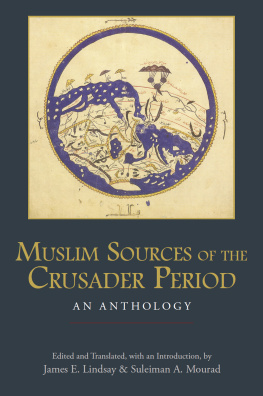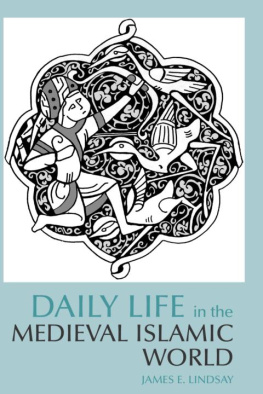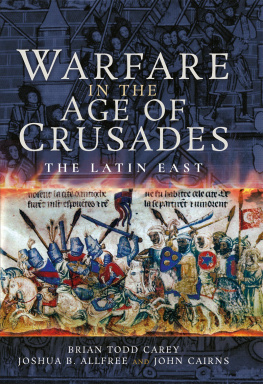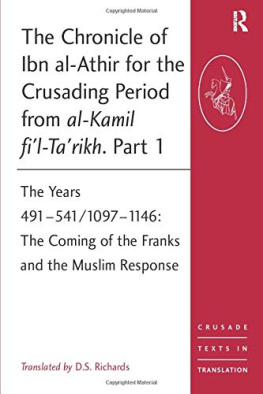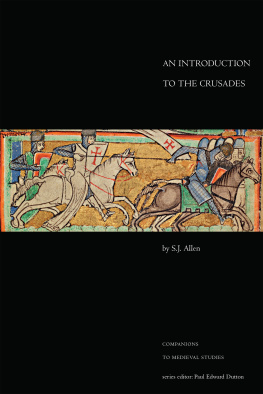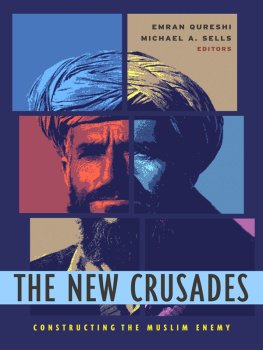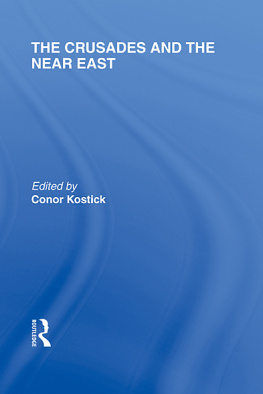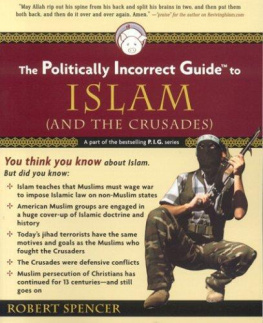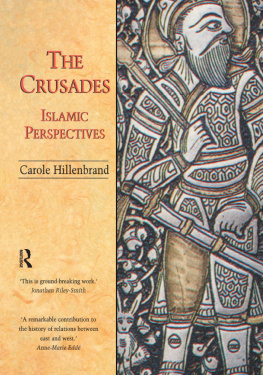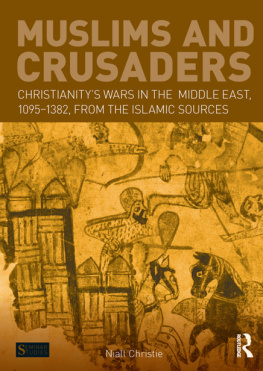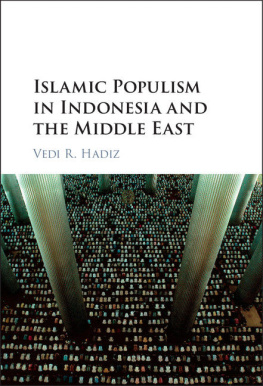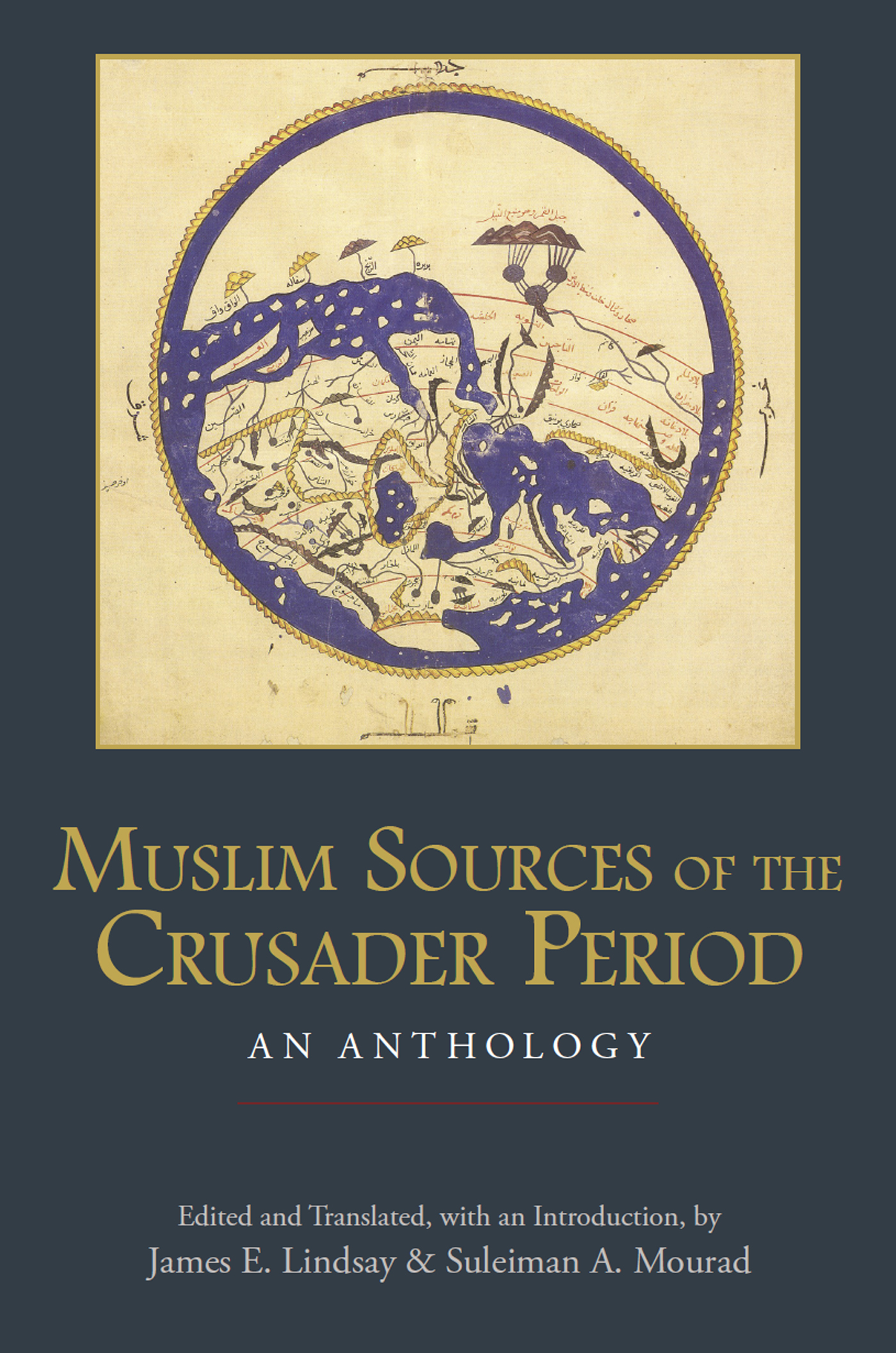Contents
M USLIM S OURCES
OF THE
C RUSADER P ERIOD

An Anthology
M USLIM S OURCES
OF THE
C RUSADER P ERIOD

An Anthology
Edited and Translated, with an Introduction, by
James E. Lindsay & Suleiman A. Mourad
Hackett Publishing Company, Inc.
Indianapolis/Cambridge
For our teachers
R. Stephen Humphreys & Tarif Khalidi
Alfred J. Andrea, The Medieval Record: Sources of Medieval History (Second Revised Edition) .
The Epic of The Cid: with Related Texts . Translated and Edited, with an Introduction, by Michael Harney.
Matthew S. Gordon, The Rise of Islam .
James E. Lindsay, Daily Life in the Medieval Islamic World .
Helen Nicholson, The Crusades .
Seven Myths of the Crusades . Edited, with an Introduction and Epilogue, by Alfred J. Andrea and Andrew Holt.
Copyright 2021 by Hackett Publishing Company, Inc.
All rights reserved
Printed in the United States of America
24 23 22 21 1 2 3 4 5 6 7
For further information, please address
Hackett Publishing Company, Inc.
P.O. Box 44937
Indianapolis, Indiana 46244-0937
www.hackettpublishing.com
Cover design by E. L. Wilson
Interior design by Elana Rosenthal
Maps by Beehive Mapping
Composition by Aptara, Inc.
Library of Congress Control Number: 2021933147
ISBN-13: 978-1-62466-996-5 (cloth)
ISBN-13: 978-1-62466-984-2 (pbk.)
ISBN-13: 978-1-62466-997-2 (PDF ebook)
ePub3 ISBN: 978-1-62466-998-9
Kindle ISBN: 978-1-62466-999-6
C ONTENTS
The page numbers in curly braces {} correspond to the print edition of this title.
Many of our joint projects, stimulated by common research interests, started with a conversation at a conference or during a visit. This time, however, it was not around Scottish tea or some other libation. The conversations were over Skype or WhatsApp or Zoom, and the common interest was pedagogical: how best to teach our students about the complexity of the interactions between Franks and Muslims in the broader context of Islamic history. Therefore, we decided that we should simply collect and translate the kinds of sources that we would want to use ourselves in our classes. Muslim Sources of the Crusader Period: An Anthology is the result. It is our hope that colleagues who teach courses on the Crusades as well as courses on the premodern Islamic Near East will find this anthology useful in their own teaching. We equally hope that this anthology will be useful to researchers who seek a better understanding of the contemporary Islamic perspectives on the Crusades and the period in general, and who might encounter for the first time some of the sources that we included.
There are several people we want to thank for their help in bringing this project to fruition. Rick Todhunter, our editor at Hackett, for his interest in and his willingness to take on such a project and especially for his patient prodding along the way. The discussions with him have been very constructive and allowed us to make the anthology accessible to a wide audience of students and researchers. Elana Rosenthal, our project manager, and her team for shepherding the anthology through the different production stages. Our students at Colorado State University and Smith College who were the first to read and analyze some of these translations in our classes. The three outstanding reviewers for Hackett for their insightful comments. The meticulous care with which they read the text and their valuable suggestions stimulated us to rearrange some of the material, and helped us revise and finalize the anthology in a much better way. Of course, any infelicities or errors are our own.
Finally, we thank our families for their love and support. This project took time and attention away from them. They even had to put up with our constant musings about the texts we have translated, and grandiose claims about the importance of the anthology. They received all of that with tremendous wisdom and graciously offered in return smiles and encouragement.
{xiii}
In popular literature and films, the period of the Crusades has traditionally been defined as beginning in 1095, when Pope Urban II made his famous address in the town of Clermont in which he called upon the knights of western Europe to undertake an armed pilgrimage to liberate Jerusalem and the Holy Land, and ending in 1291, when the Crusaders lost their last holdings along the coast of the eastern Mediterranean to the Mamluk Sultan al-Ashraf Khalils forces. Few specialists in Crusades history today accept this narrow time frame, even though it remains popular among non-specialists and the public. More problematic is that the 1095 to 1291 time frame tends to restrict the focus of the period solely to the clash between Western Christendom and the Islamic lands of the eastern Mediterranean. Studies in the last three decades have demonstrated that Crusader campaigns continued long after 1291, that they targeted areas elsewhere throughout Europe and the Mediterranean, and that they were not exclusively against Muslims.
Nevertheless, the clash between the Muslims and the Franks (as Western Europeans were collectively referred to in Muslim literature) remains the focus of Crusades scholarship. Additionally, religion is invariably the lens through which the period is historically analyzed. Other forms of interactions between Muslims and Crusaders or categories of analysis for the period tend to be secondary and have not resulted in serious alterations to the general narrative of ChristianMuslim conflict. While evidence of conflict is abundant, there is also a great deal of evidence of amicable MuslimCrusader interactions. Moreover, because the period is riven with internal animosities and rivalries among Muslims and among Crusaders, limiting ourselves to Muslims and Crusaders as analytical categories that reflect unvariegated unity, cohesion, common approach, and so on within each group simply is not feasible. Rather, while these groupings can be used as {xiv} terms of convenience to simplify the discussion, we should be careful not to infuse them with assumptions that convey meanings that do not reflect the complicated realities of the actual situation among the various actors and communities in Syria and Egypt.
Historians of the Crusades have at their disposal a large corpus of Muslim sources, which reflect a variety of views on what unfolded in the eastern Mediterranean and the Near East between the eleventh and fourteenth centuries. Written in greater Syria, northern Mesopotamia, and Egypt, they provide eyewitness and contemporary historical accounts of the period, as well as secondary testimonies on the variety of Muslim responses to and interactions with the Franks. They also register how the events and main figures involved in them were remembered in later years and subsequent centuries, allowing the historian to gauge the impact of the Crusades on Islamic history, culture, and society, as well as their legacy and how it was exploited in intra-Muslim dynamics as well as MuslimEuropean relations.
Despite their importance, the Muslim sources remain relatively marginal in the way the general history of the Crusader period is written as most Crusades historians are understandably trained in the numerous requisite European languages and not Arabic. Consequently, the European sources tend to dominate the narrative apart from the relatively few Arabic chronicles that have been translated into English or other European languages. This anthology is an attempt to bring to light a disparate selection of sources that in our assessment introduce the student of Crusades history to a more complex understanding of the Crusades and the interactions between Franks and Muslimswhich ranged from animosity to amityin the broader context of Islamic history.

